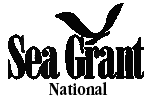
Developing a volunteer monitoring networkThe goal is to bring together a regional and possibly an international network of volunteers that will monitor the coast for marine invasive species (MIS). A MIS Monitoring Network will begin to address the problems of a chronic shortage of empirical information, large spatial scales, and heterogeneous landscapes, and hopefully, result in more accurate information regarding distribution and abundance of marine invasive species. These volunteers will be the vital eyes for managers searching for invasive crabs and other invaders. Achieving this coalition of regional volunteer coordinators and volunteers will be critical since early detection allows for the best chance of eradication. Land-based invasive plant programs have successfully involved citizen volunteers in data collection and invasive species eradication for many years. However, employing volunteers in marine bioinvader research and detection is relatively new. Determining how to create and maintain a monitoring network that results in high quality data and maximizes efficacy will be the goal of this part of the project. SSCW learned that citizens needed more extensive training than anticipated, better species identification materials, and longer assistance in the field by staff members before becoming confident in their monitoring abilities. However, it also became clear that with appropriate guidance, volunteers could master the material and conduct productive monitoring in their communities. Expanding on Salem Sound Coast Watch (SSCW) experience with volunteers, this MIS Monitoring Network will foster the exchange of ideas among organizations from Canada to New Jersey while evaluating the effectiveness of monitoring protocols and techniques. Developing a volunteer MIS Monitoring Network will require overcoming some difficulties. To work through these difficulties, a pilot project will commence in summer 2005 to evaluate individual monitoring group’s data collection abilities and accuracy. Each monitoring group needs a regional organization, like Salem Sound Coastwatch, to be the volunteer coordinator. Any volunteers? Working with the project scientist, the coordinators will determine where volunteers should monitor, provide training and supervision, and take responsibility for data entry. Groups are composed of college students, high school students, and adult volunteers from Salem Sound, Fall River, Hingham, Scituate, Massachusetts, the UNH marine docent in NH, and Acadian Institute of Oceanography, College of Atlantic summer camp, local high school students, in Maine will begin monitoring their coasts. The evaluation of monitoring skills is essential since age, experience, and education-level vary among the monitoring groups. The evaluation will help to determine best strategies and set, if needed, eligibility and training requirements to facilitate a network of high quality data collectors over a large spatial scale. Also it will allow us to improve the methodology website, etc, so it is better each year! |
As part of the pilot program, the project scientist, Dave Delaney and assistant, will travel to each site and observe each group’s monitoring. Also, the scientist will conduct independent sampling (“shadow sampling”) at each site to determine sampling accuracy and repeatability due to environmental heterogeneity. At this time, the required number of transects and quadrats will be statistically determined, as well as the feasibility of accurate replication, and a density count of invasive crabs will be taken at each site. Two other challenges for the monitoring network are accessibility and sustainability. The necessary field equipment is not extensive and is common except for a few objects such as crab traps, a refractometer, and a flow meter. After the first 2 to 5 years of the monitoring network, an established group such as New England Centers of Ocean Sciences Education Excellence, SSCW, the New England Aquarium, or another citizen science group may be able to provide sustainability and leadership to support the continued work of the MIS Monitoring Network. The Network will communicate through emails, and the website. The data will bedisplayed on MIT Sea Grant's website and used for MIS Research and Modelling.
|



